Event recap – Leading With Equity: Tribal Food Sovereignty & Inclusive Engagement
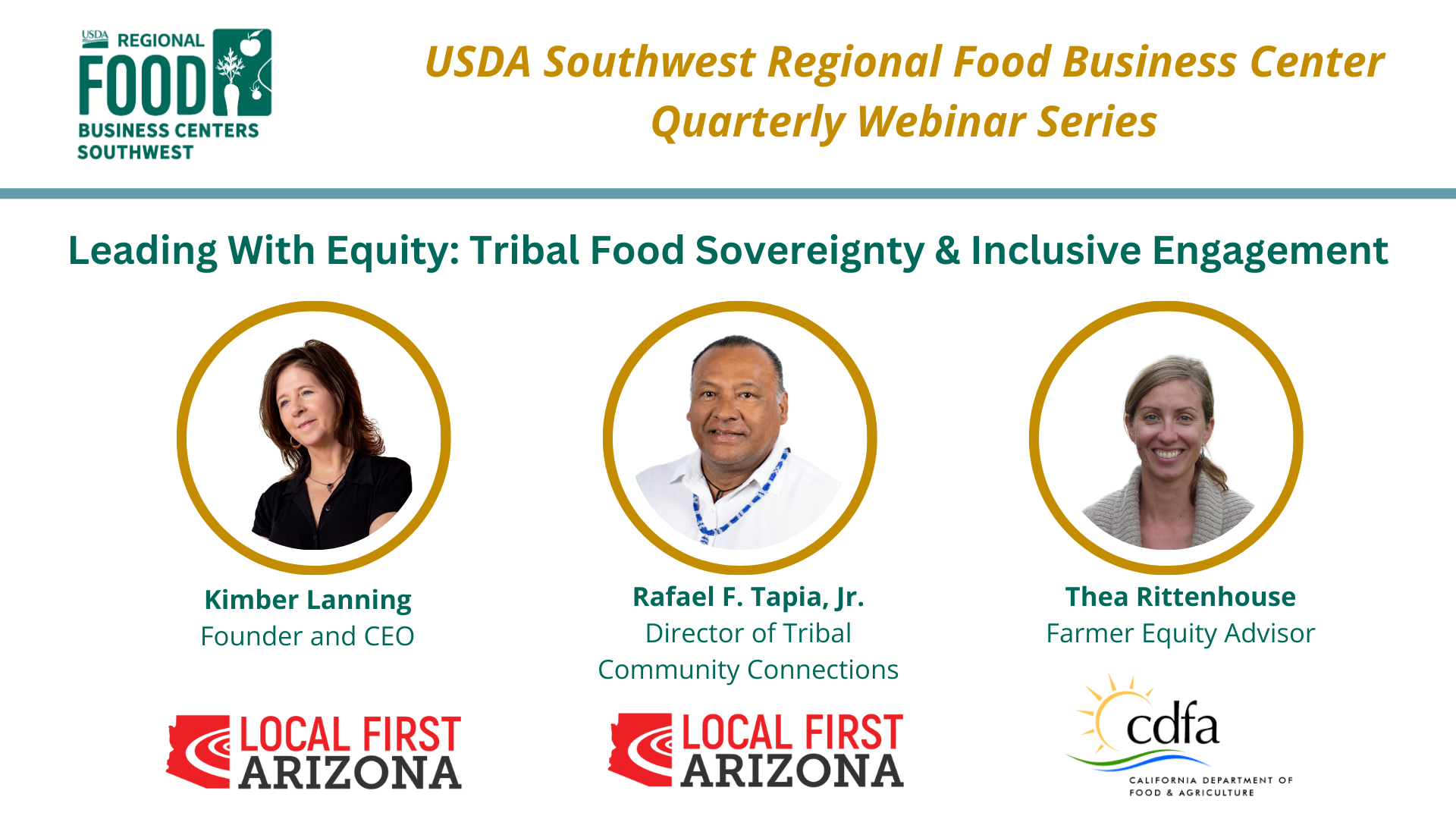
On July 17th, the USDA Southwest Regional Food Business Center hosted an informative webinar titled “Leading With Equity: Tribal Food Sovereignty & Inclusive Engagement.” This event featured Center partners, including the California Department of Food and Agriculture (CDFA) and Local First Arizona. Speakers Kimber Lanning and Rafael F. Tapia, Jr., of Local First Arizona, and Thea Rittenhouse of CDFA, discussed equity-centered initiatives and strategies to bolster food sovereignty for Tribal Nations and other underinvested communities. The webinar is part of the Center’s quarterly webinar series, where Center partners share best practices and innovative projects on essential topics related to business development and capacity assistance for local producers, farmers, and ranchers.
Over 60 participants from across the nation attended the webinar, including representatives from other USDA Regional Food Business Centers. Attendees were actively engaged throughout the webinar and speakers were able to address dozens of questions throughout the session.
One of the key takeaways from the webinar was the emphasis on food security, traditional food practices, sovereignty, and self-determination. Speakers discussed best practices for incorporating Indigenous knowledge and highlighted the unintended consequences of policies and funding that do not consider Tribal interests or approaches. They suggested pathways to build communication, develop partnerships, and establish trust. Additionally, the speakers addressed the critical infrastructure needed for Tribal communities, such as new wells, aggregating and distributing facilities, food-to-market distribution, and technical assistance, including business and market development skills.
The next webinar will take place on October 16th.
About Valley Vision and the Southwest Regional Food Business Center
Valley Vision leads coordination, communication, and network development efforts for the Southwest Regional Food Business Center. The quarterly webinar series is part of Valley Vision’s efforts to share best practices and to foster a collaborative network among Center partners and other participants.
The Southwest Regional Food Business Center, representing Arizona, California, Nevada, and Utah, is one of twelve USDA Regional Food Business Centers nationwide developed in 2023 to provide coordination, technical assistance, and capacity building to help farmers, ranchers, and other food businesses access new markets and initiatives, as well as navigate federal, state and local funding and resources. With an extensive network of partners from academic, government, and community-based organizations, the Southwest RFBC is dedicated to prioritizing historically underrepresented communities and small to mid-tier businesses.
For more information about the USDA Southwest Regional Food Business Center and its initiatives, visit www.swfoodbiz.org. To stay updated on future webinars and events, be sure to subscribe to the Center’s newsletter: http://bit.ly/SWRFBC-Newsletter.
USDA disclosures and guidance can be found at https://bit.ly/USDAdisclosures.
Visit the Center’s socials here.
Preparing Tomorrow’s AgTech Workforce

As technology advances and industries undergo transformations, our region must equip job seekers with the skills and knowledge needed to thrive in the workforce of tomorrow. On April 26th, Valley Vision hosted an advisory on AgTech careers, exploring the technical skills needed to meet the evolving needs of the agriculture and manufacturing industries. The event featured labor market information and an employer panel including Jose Alvarez of Del Monte Foods, Greg Ahart of Superior Farms, Trudi Hughes of the California League of Food Producers, Diane Robinson of TOMRA Foods, and Amy Vedmore of Blue Diamond Growers. Key takeaways from the event were the importance of using data to inform promising career pathways in the field, the need to adapt to technological advancements, and collaboration as key to accomplishing both.
The agricultural industry in the Greater Sacramento region offers numerous opportunities, with over 15,500 available jobs and an average annual wage of $60,763. However, the sector has faced reductions in some positions, including an 8% decline in overall employment from 2017 to 2022 and a projected continued 1% decrease by 2027. Biological technicians offer an opportunity with the largest increase in job postings, indicating a growing demand for roles that combine life sciences and agriculture. Additionally, positions supporting IT or technical functions are projected to grow.
Trudi Hughes from the California League of Food Producers led the panel discussion on the importance of adapting to technological advancements, particularly within the food processing industry. She emphasized that in addition to AI and automation becoming increasingly prevalent, there is also a critical need for skilled workers who can install, maintain, and repair equipment, as well as ensure compliance with complex regulatory environments. Integrating modules on AI-driven agricultural technologies, such as electronic sorting and grading equipment, into the curriculum can provide students with a comprehensive understanding of their applications. Panelists explained that these technologies require human oversight to ensure accurate machine learning, making it essential for educators to teach students how to manage and maintain them.
The industry panel also emphasized the need for customized courses to address the specialized skills evolving in the industry. They seek candidates with expertise in electrical, mechanical, welding, refrigeration, and boiler operation. Recommendations were made for training programs to cover compliance, regulatory requirements, automation control, instrumentation, in addition to emerging technologies like robotics, AI, and machine learning. Furthermore, they indicated specialized skills in electronics, software engineering, and cybersecurity are also desired. Diane Robinson recommended a dual focus on technical skills and “behavioral competencies,” such as adaptability, acquired through team-based learning, to prepare for evolving job requirements. Panelists agreed, for careers in agriculture and manufacturing, individuals need to not only gain technical skills but also develop essential soft skills such as critical thinking, adaptability, and teamwork.
Collaboration was a focal point during the advisory, with panelists emphasizing the importance of partnerships between educational institutions and industry. Jose Alvarez from Del Monte Foods emphasized the importance of continuing conversations between industry and training partners on a regular basis, not just once a year. He felt strongly it is important to define skills needed as an industry cohort to help training partners clearly understand in order to make progress in closing the skills gap. These types of collaboration would not only address the current demands but could also foster a culture of continuous learning with local employers that have first-hand knowledge of the industry.
The advisory concluded with breakout rooms to encourage collaboration between employers, education, and workforce training partners. By developing and maintaining strong partnerships between educational institutions and industry, there is a unique opportunity to shape a talent pipeline that not only meets today’s workforce needs but also anticipates and adapts to future challenges and opportunities.
This advisory was funded by Los Rios Community College District through Strong Workforce Program funds and the Capitol Region Workforce Boards through Regional Planning Implementation funds.
Transforming Food Systems Across the Southwest Region
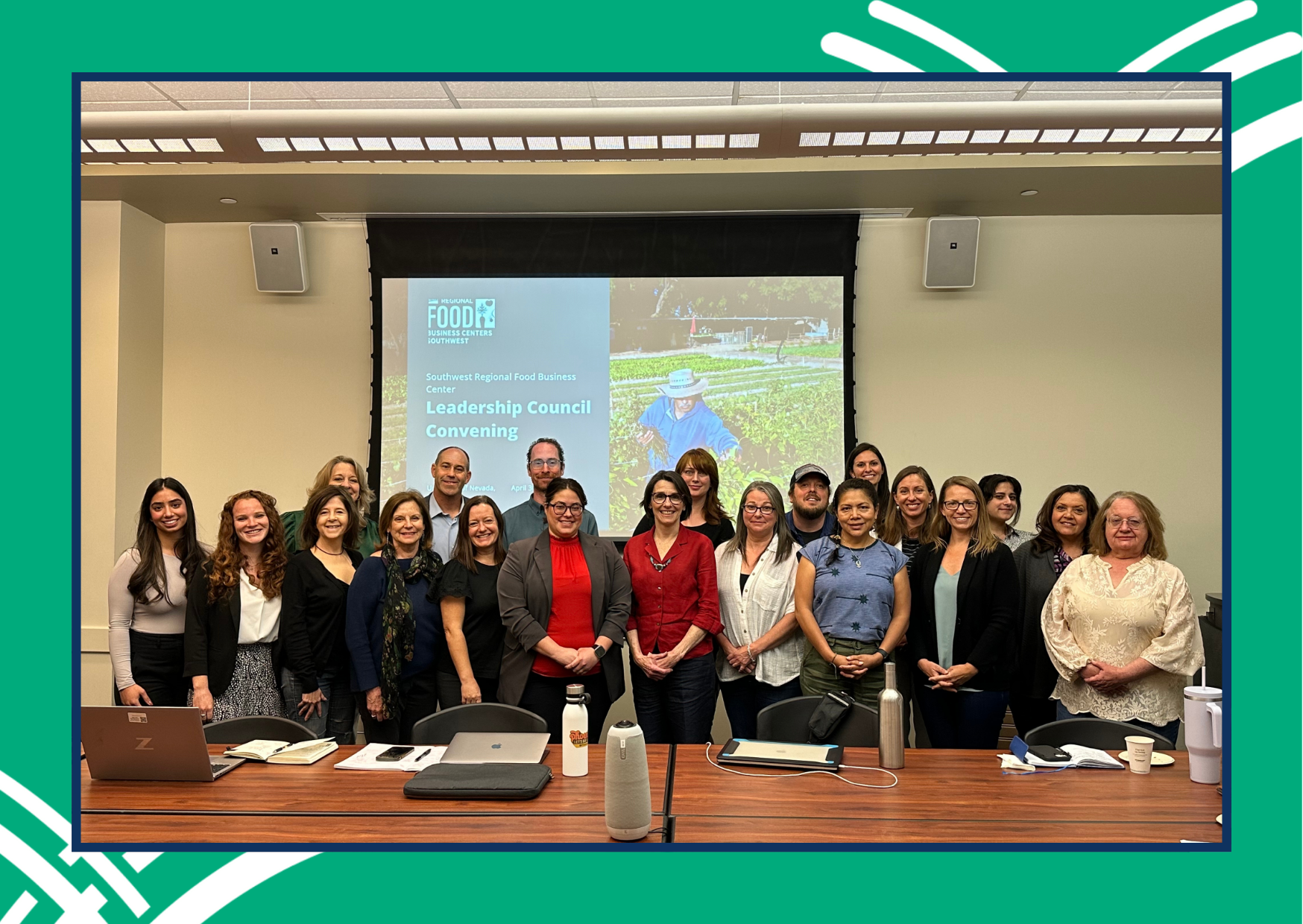
At the beginning of May, leadership of the USDA Southwest Regional Food Business Center convened in Reno, Nevada, providing the opportunity to further advance the Center’s mission, objectives, and programmatic activities, as well as share insights and best practices across emerging opportunities for food system transformation.
During the two-day convening, hosted by the University of Nevada, Reno (UNR), leadership representing the Southwest Region (Arizona, California, Nevada, and Utah) discussed the unique assets, needs, and activities within each state, and solidified the Center’s workplan. Day one featured collaborative working sessions oriented towards internal Center values, capacity, and timeline, as well as a tour hosted by the UNR Desert Farming Initiative (DFI), showcasing climate-smart crops and farming practices, local food-to-market successes, and active research initiatives.
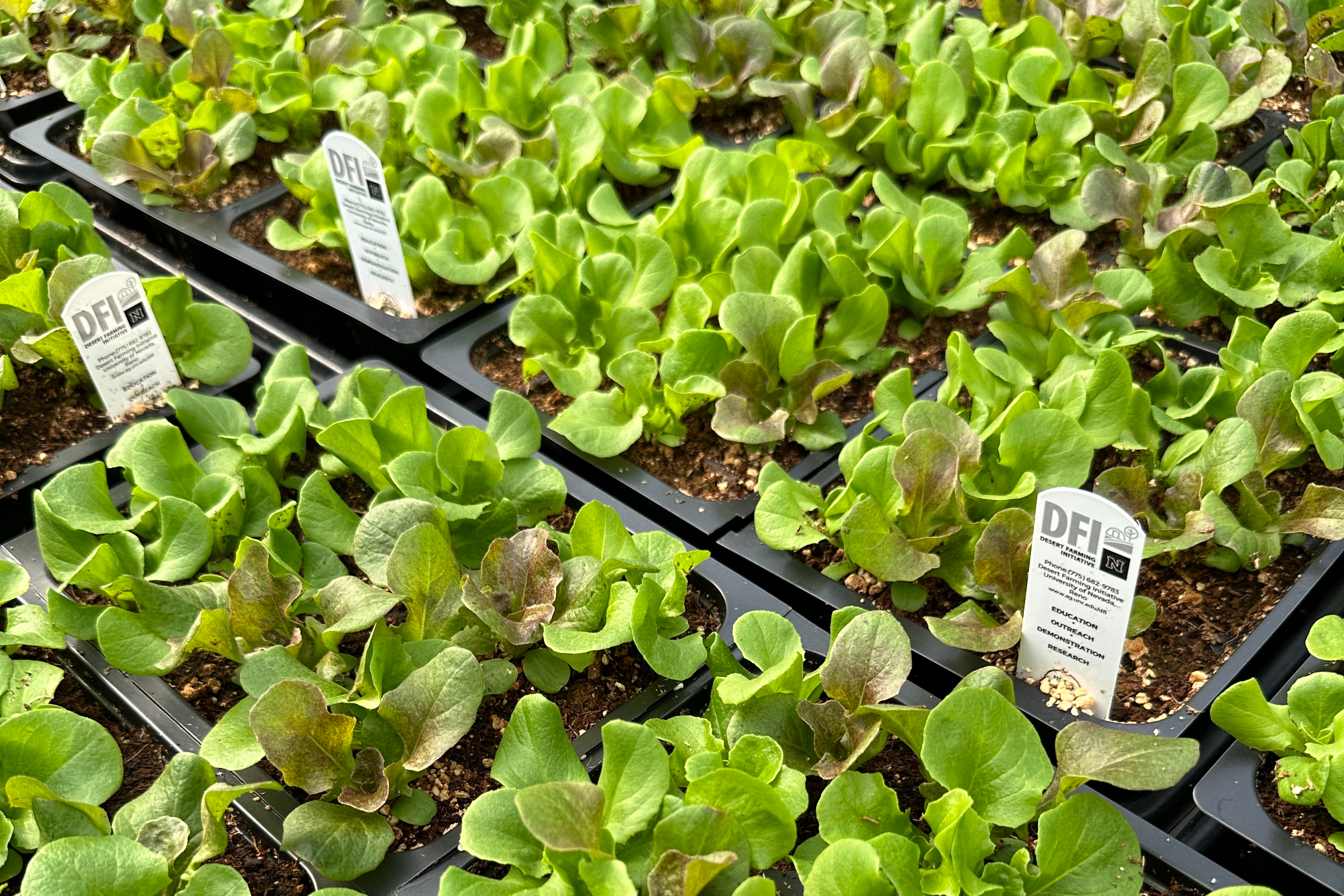
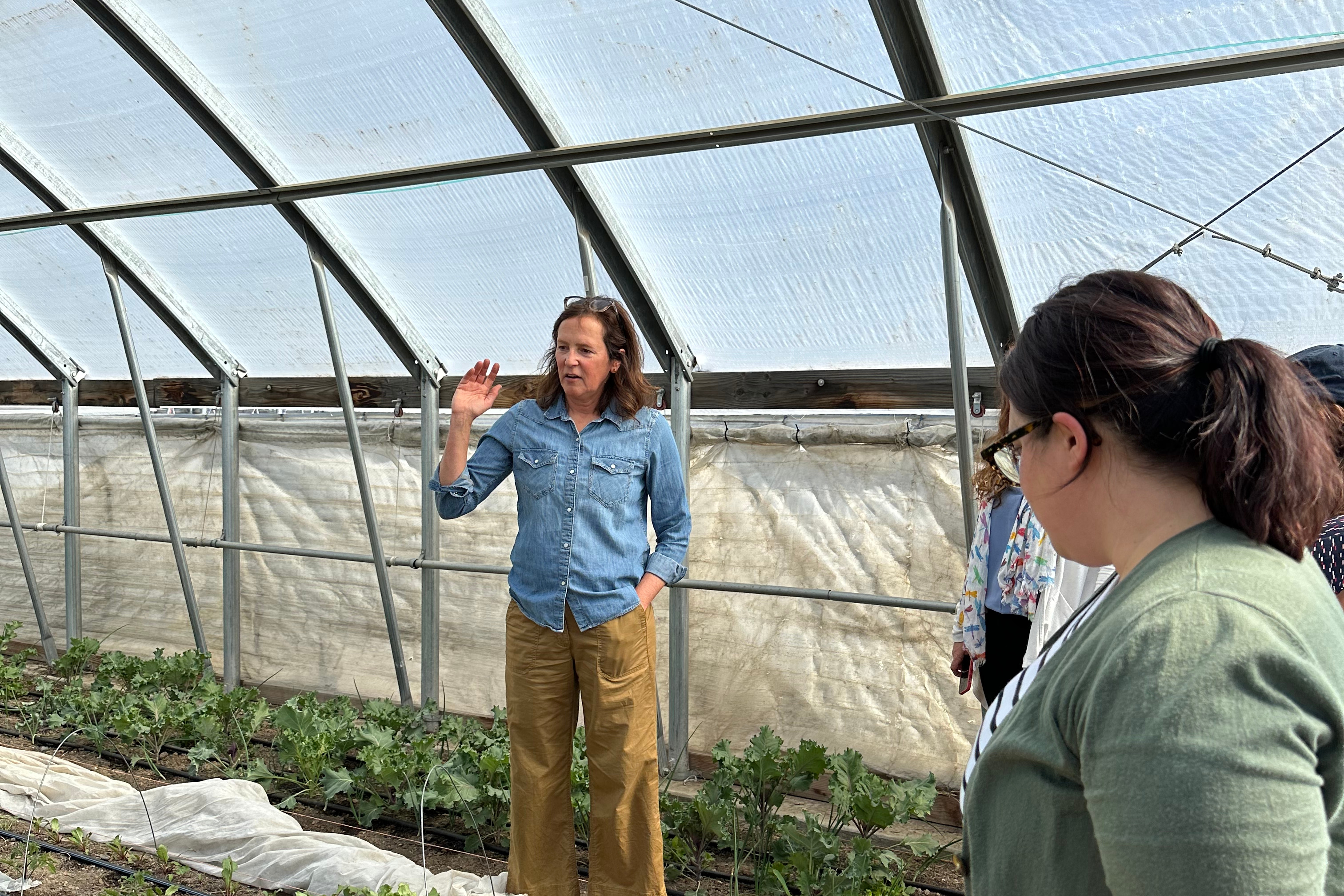
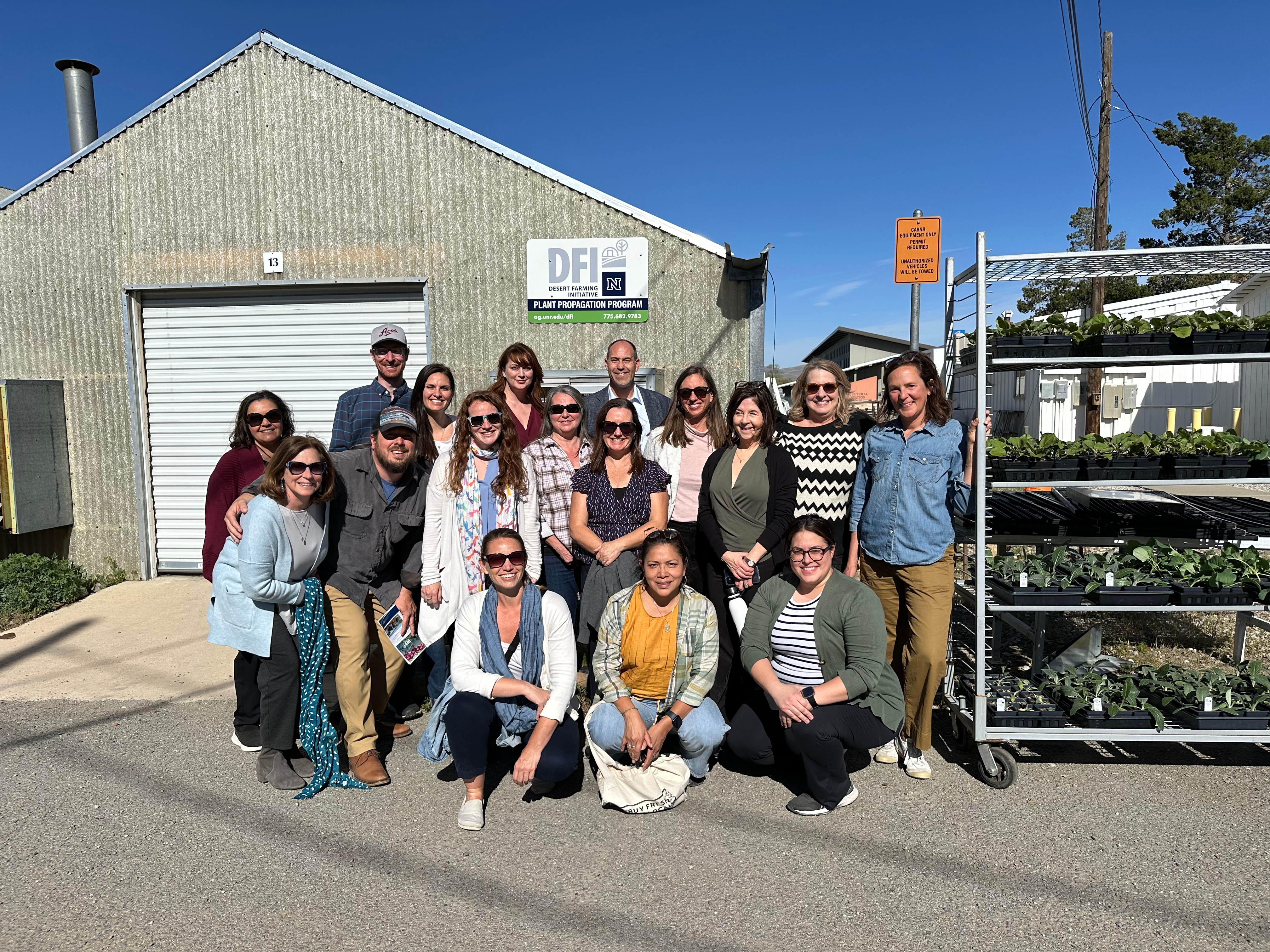

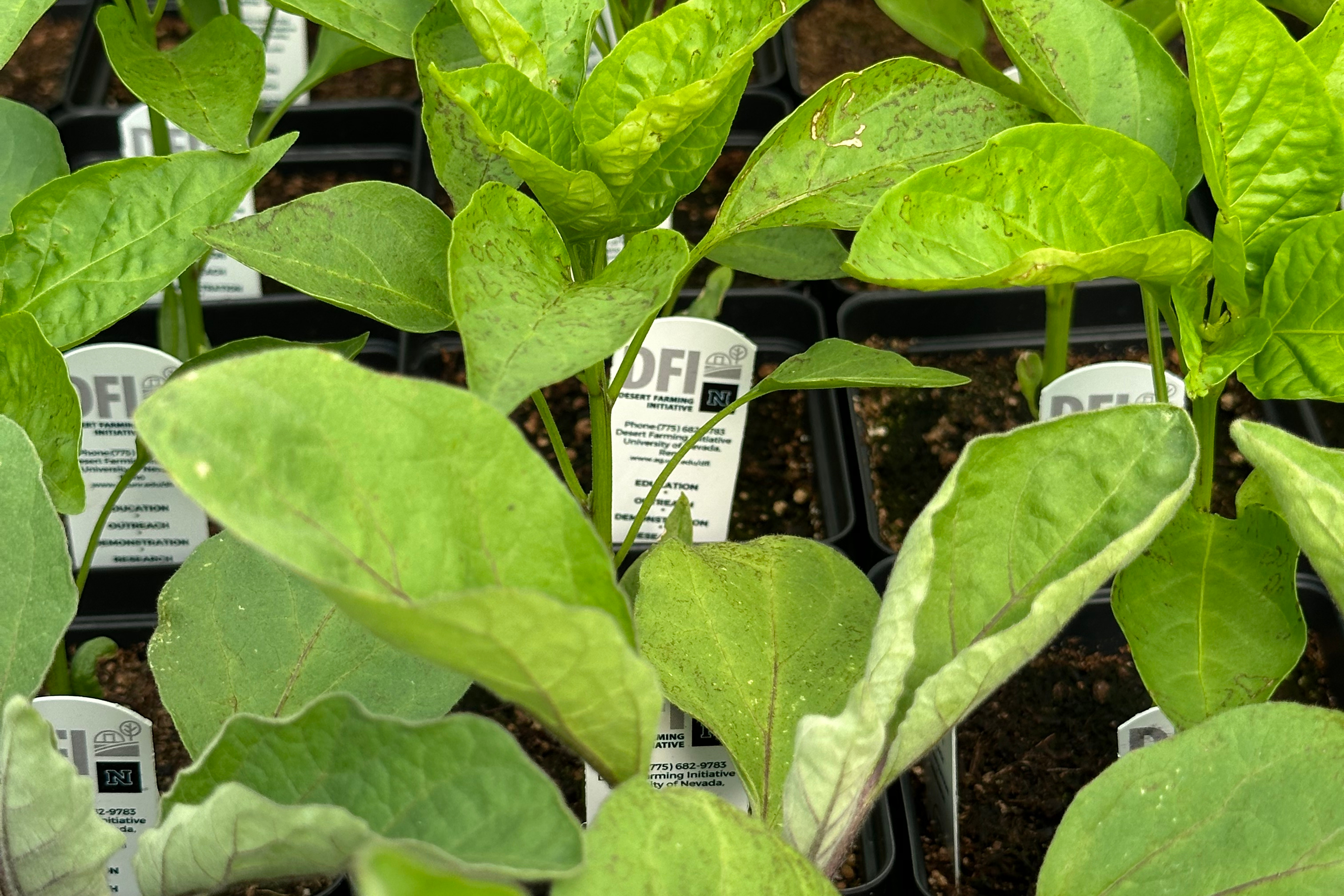
USDA Marketing and Regulatory Programs Senior Advisor, Kate Fitzgerald, joined Day 2 for an interactive brainstorming session regarding opportunities for collaboration between the USDA and the 12 Regional Food Business Centers nationally. Leadership from each state also provided teach-ins across emerging opportunities, such as equity in technical assistance, market access structures such as institutional procurement and food hubs, and microloan funding development.
This gathering provided Center Leadership with solutions, insight, and connections to drive the Center forward in its mission to transform the region’s food system through investment in small and mid-sized food and farm businesses by providing coordination, technical assistance, and capacity-building for the Southwest Region.
About the Center:
The Southwest Regional Food Business Center is a five-year $35 million program funded by the USDA Regional Food Business Centers Program, connecting Food and Agriculture Initiatives across Arizona, California, Nevada, and Utah. As part of the network of USDA Regional Food Business Centers, the Southwest Center is a hub for the region’s small and mid-tier food and farm businesses and local and regional food sector development initiatives.
In collaboration with University of California Agriculture and Natural Resources (UC ANR), Valley Vision supports the Center as part of the Center Management Team, leading communications, partnership development and programmatic operations.
Subscribe to the Center’s Quarterly Newsletter here.
Visit the Center’s socials here.
Accessing Dispatcher Jobs in Greater Sacramento: Opportunities Unlocked
On April 4th, Valley Vision, in collaboration with the region’s community colleges, hosted a virtual discussion to address the critical need for public safety dispatchers in the Greater Sacramento region. The conversation explored training opportunities, recruitment strategies, and the challenges individuals face in entering this high-paying, middle-skill profession. Labor market data indicates a 12% project job change rate for public safety dispatchers in the Greater Sacramento region. The profession offers not only job security but also competitive wages, with entry-level dispatcher wages in Sacramento exceeding $59,000 annually, while the median salary for dispatchers is $72,758.

The advisory’s keynote speaker, Jennifer Dwyer, Staff Services Manager from the Commission of Peace Officer Standards and Training (POST), explained the required curriculum for peace officer dispatchers in a keynote address at the employer advisory. She explained that the current curriculum is under review by the Office of Administrative Law for needed updates. After approval, there will be an increase in the Basic Training requirement from 120 to 160 hours, and Continued Professional Training (CPT) will be introduced, ensuring ongoing professional development for dispatchers during their careers.
Despite the demand for skilled dispatchers, entering the field can be confusing. While the minimum education qualification is a high school diploma, in order to take most courses to become a dispatcher, individuals must be hired by a public safety agency to be admitted into a program. Many individuals want to take the POST course before being hired, however most agencies send employees to training only after placement. Presently, the only community college program offering POST training to non-affiliated individuals relatively near the Greater Sacramento Area is the South Bay Regional Training Consortium, with a staggering four-year waitlist.
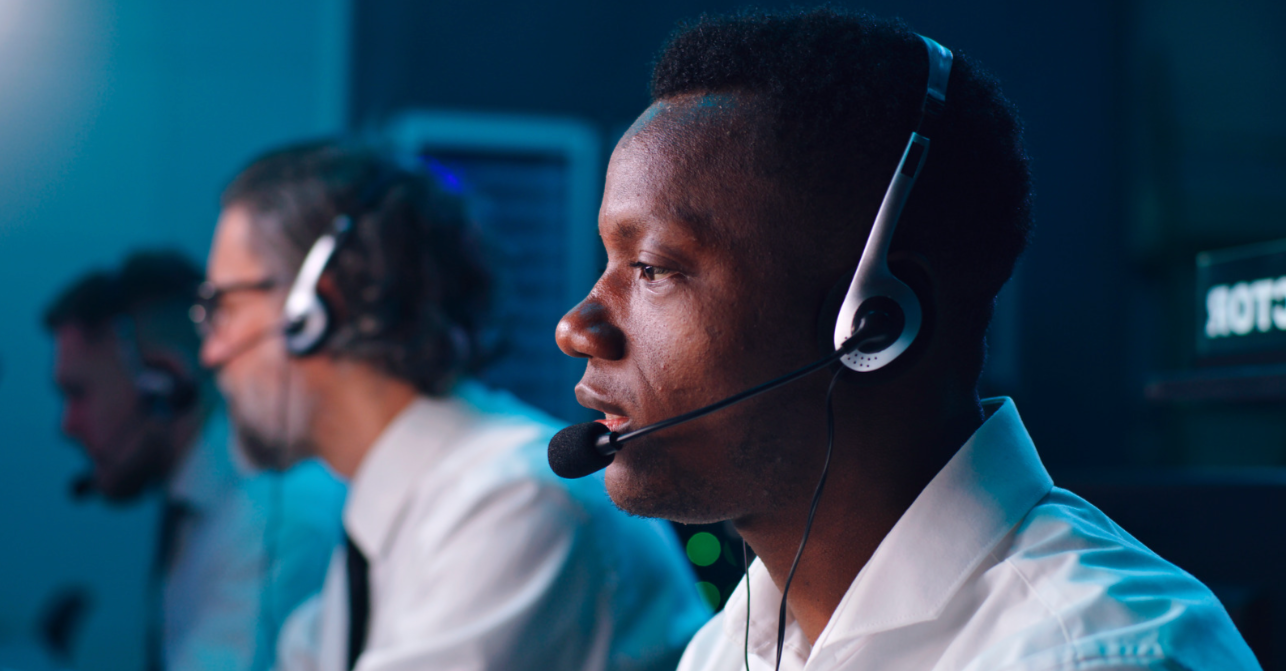
In addition to the certificate training required, the role of a public safety dispatcher requires a unique combination of human-centered, and tech-forward skills. As we learned from our panel including Sacramento Police Department, City of Roseville Police Department, Placer County Sheriff, and Sacramento Regional Fire and EMS, dispatchers must be proficient in traditional methods such as map reading and report writing, while also being adept at using modern technologies such as GPS programs and coding. One common skills gap identified among all employer panelists was the ability to multitask efficiently. Dispatchers are required to handle a variety of tasks simultaneously, including answering phone calls, managing radio transmissions, operating computer systems, and more, all while remaining calm and focused. The panelists agreed, that effective communication skills are essential for dispatchers to handle stressful conversations with callers and quickly gather important information. In addition, dispatchers must be able to make logical and quick decisions in high-pressure situations. A combination of excellent communication skills, the ability to be emotionally supportive, and technological competency are necessary to excel in these positions.
Historically, the public safety dispatcher profession has been predominantly female, with women making up 71% of the workforce. While this reflects the profession’s accessibility and appeal to women, efforts are underway to broaden marketing strategies to encourage a more diverse representation of talent to apply for these positions. By diversifying the talent pool, we can ensure that the profession more accurately reflects the communities it serves.
Increasing access to training and promoting diversity within the public safety dispatcher profession are essential steps in meeting the critical demand for skilled dispatchers in the Greater Sacramento region to address our emergency response needs. By working collaboratively with education and industry partners, we can ensure that individuals from all backgrounds have the opportunity to pursue and excel in this rewarding career path.
This advisory was funded by Los Rios Community College District through Strong Workforce Program funds and the Capitol Region Workforce Boards through Regional Planning Implementation funds.
AgHiRE: Professional Development for the Spanish-Speaking Farm Workforce
Agriculture is vital to our national and global economy, and the agricultural workforce is essential to sustaining the industry and a resilient food system. Today, farm employers encounter numerous obstacles in maintaining and expanding this evolving workforce to meet current and future demands. Specifically, the language barrier exists as a roadblock for both Spanish-speaking farmworkers who want to move into positions with more responsibility and farm employers who are seeking to fill vacant management positions. How can farm employers assist talented farm workers and employees in moving up the career ladder, which will also help to increase the productivity and competitiveness of their farming and business operations?

There have been many groups who have provided and are continuing to offer the necessary training and tools for current and aspiring farm employees to advance in their careers. The Center for Land-Based Learning, founded in Winters, California, in 1993, is a nonprofit that provides training, direction and resources to farmers, entrepreneurs and high school students through youth and adult programs across agricultural regions in California. Currently, the Center for Land-Based Learning is in the early stages of designing a leadership and development program for the Spanish-speaking agricultural workforce called AgHiRE, which is a program funded through the California Workforce Development Board High Road Training Partnership (HRTP) initiative.
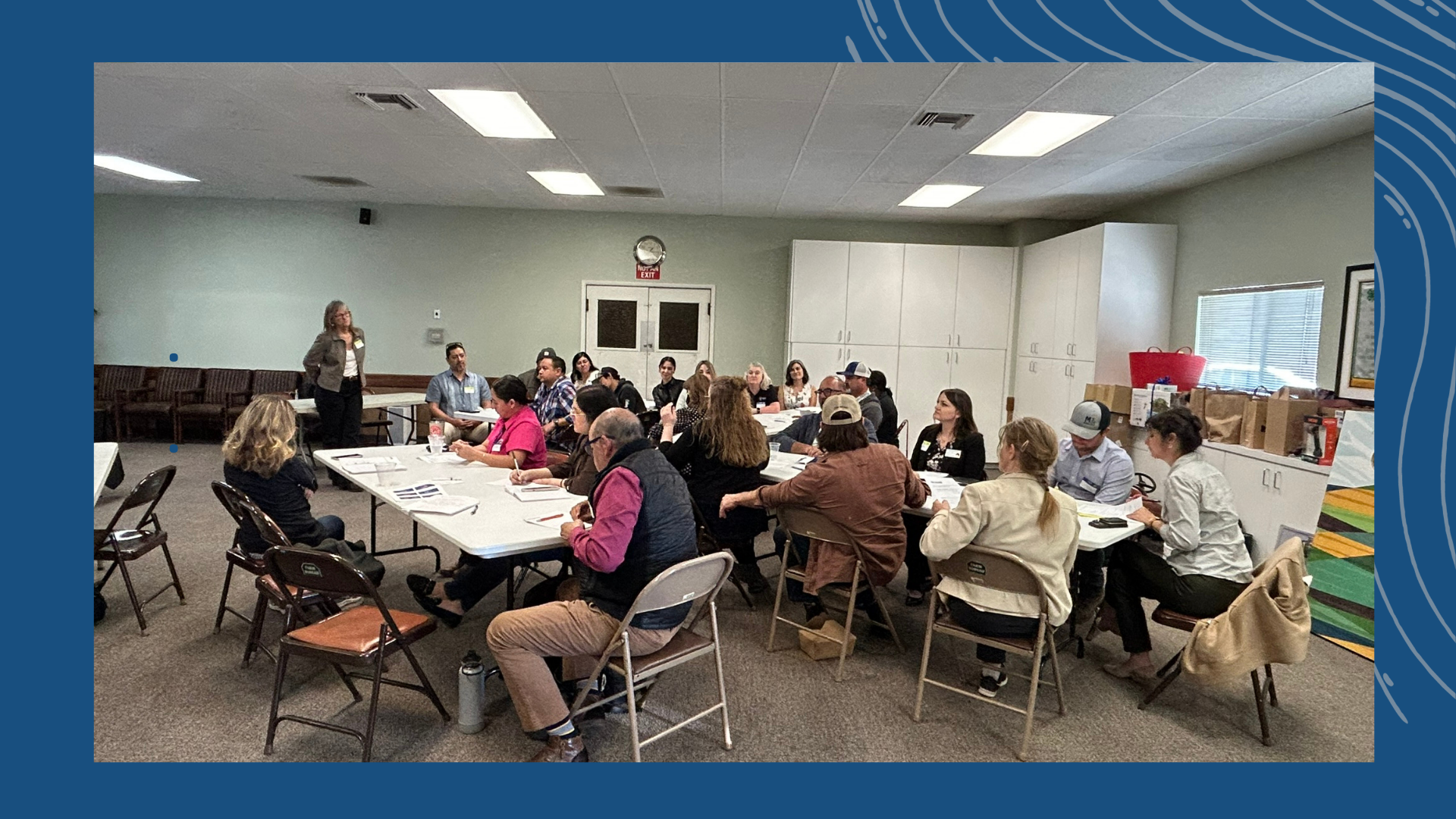
The Center for Land-Based Learning, in partnership with Valley Vision, hosted an in-person luncheon with local farm employers and education partners on March 19th at the Yolo County Farm Bureau. At this event, results were shared from a survey of farm employers across California to learn more about their Spanish-speaking employee development needs. Local farm employers joined education partners in providing valuable insights and feedback for the initial proposed design of the AgHiRE program. More specifically, farm employers discussed what would work best for them and their workers, and what might be less feasible when considering topics like leadership and communications, English learning, digital skills, math skills and regulatory awareness. These were some of the key takeaways from farm employers at the luncheon:
- Leadership & Communication skills are key for farm leaders, and relatively few resources exist to meet this need in Spanish
- Professional development of the farm workforce will mutually require employees and employers to contribute a great deal of effort and some time to successfully develop talented individuals
- Running a farm can be isolating– farm employers expressed optimism at discovering a sense of community and support for employee development and in the meeting, and looked forward to future collaboration
In the survey, farm employers expressed that the following sets of skills (see below image) were necessary for success in management positions. They also agreed that these skills must be taught in the context of their line of work and must be taught in combination with each other in order to be successful within a three month training program. For instance, leadership and communication skills should be taught in combination with the English language as well as regulatory awareness.

By the end of the event, many farm employers were interested in serving on the advisory committee to help further develop the training program. Through the AgHiRE: Spanish-Language Leadership Program, the objective at the Center for Land-Based Learning is to help farm workers with high potential move up into more skilled positions, providing benefits to everyone.
To learn more about the Center for Land-Based Learning and their programs, visit their webpage here. To get involved with their AgHiRE: Spanish-Language Leadership Program, contact their California Farm Academy staff here.
Kathy Saechou is a Valley Vision Project Coordinator staffing the Clean Air & Climate and 21st Century Workforce Impact Areas.
Hilary Tellesen is a Valley Vision Senior Project Manager leading the 21st Century Workforce Impact Area.
Transforming Apprenticeships: Exploring Innovative Strategies in the Capital Region
California has an ambitious goal of expanding apprenticeships to serve half a million people by 2029. To achieve this, the state needs to create more opportunities and pathways for non-traditional and youth apprentices, especially those from historically underrepresented groups. This was the main theme of the “Nurturing Talent, Building Futures” event, hosted by Valley Vision, SETA and SMUD on February 6, 2024 at the SMUD Customer Service Center.
The event brought together workforce advocates, program experts, and industry leaders to exchange ideas and resources on how to develop and implement effective apprenticeship programs in the region. Evan Schmidt, CEO of Valley Vision, opened the event by highlighting the importance of collaborative efforts to support inclusive economic development in Sacramento and surrounding counties. Schmidt also pointed out the role of apprenticeships in advancing the California Jobs First initiative, which aims to foster a more equitable and resilient economy.
Dave Tamayo, SMUD Director from Ward 6, welcomed the participants and urged them to find new ways to connect with diverse groups of people and offer them access to emerging career opportunities in the clean energy sector. He also stressed that SMUD is committed to supporting inclusive workforce efforts as part of its 2030 Zero Carbon Plan.
The keynote speaker, Amie Bergen, Chief of the Apprenticeship and Workforce Innovation Unit at the Department of Apprenticeship Standards, gave an overview of the benefits and features of registered apprenticeships, which are industry-approved programs that provide nationally recognized credentials, on-the-job training, and progressive wages. She also introduced the California Opportunity Youth Apprenticeship Grant, a new funding source currently accepting applications that aims to increase the participation of opportunity youth in pre-apprenticeship and apprenticeship programs.
Following the keynote address, Renee John, Managing Director at Valley Vision, moderated a panel discussion with regional program experts, who shared their insights and best practices on designing and delivering innovative apprenticeship programs. Throughout these discussions, apprenticeships were acknowledged as being one of the most effective workforce development tools. Panelists agreed building a pipeline of skilled workers for high-paying careers was crucial, and that should start as early as possible for young people.
Panelists discussed challenges faced in developing apprenticeships including employer engagement, students’ needs for wraparound support, and working with unions. Additionally, meeting folks where they are was a recurring theme. This referred to the location and modality of instruction, as well as the need to provide wraparound support to help individuals succeed through the phases of apprenticeship training. Whether English and math competency, reliable transportation, or specific schedule needs, panelists reflected on how implementing innovative strategies to address these is critical to expanding access to youth and traditionally underserved populations.
Specific to youth apprenticeships, panelists indicated that while many employers are interested in them, their focus is mainly on college-age individuals between the ages of 18-24, and they seldom open their doors to youth under 18. Some of the challenges shared were employers are less accommodating to high school schedules, they would rather not deal with child labor laws, and have preconceived notions on youths’ abilities to consistently perform in a work environment.
Following the presentations and panel discussion, guests were invited to join breakout sessions to network and form connections to strategize and advance career pipeline efforts. The breakout sessions were in the industry sectors of green jobs, public sector, mental and behavioral health, and education/early childhood education. Participants shared challenges including finding experienced instructors, the need for wraparound support services within funding mechanisms, challenges with employer engagement, and integrating trauma-informed practices.
The event wrapped up with a call to action with attendees urged to take advantage of the resources and opportunities available, and continue collaboration. Investing in the talent and potential of our diverse community members and next generation is key to achieving California’s goal of expanding apprenticeships to serve half a million people by 2029, ultimately building a brighter future for everyone.
If you missed the event on non-traditional and youth apprenticeships, don’t worry! Catch the recap on Valley Vision’s YouTube page.
21st Century Workforce – A Year in Review
Valley Vision’s 21st Century Workforce impact area provides relevant, data-driven research to advance responsive and equitable career pathways. To that end, we regularly hold regional industry advisories to examine skill gaps and labor demand to inform workforce development partners. The events throughout the year offer insights into skills gaps and labor demand in varied industry clusters. The advisories are conducted in collaboration with the Los Rios Community College District and supported by the Capital Region workforce boards.
In 2023 we hosted a total of 6 avdisories with almost 450 registrants. As we enter 2024, we want to reflect on a few of these memorable sessions that showcased how employers and workforce stakeholders are working to build connections for equitable pathways to growth.
Advanced Manufacturing
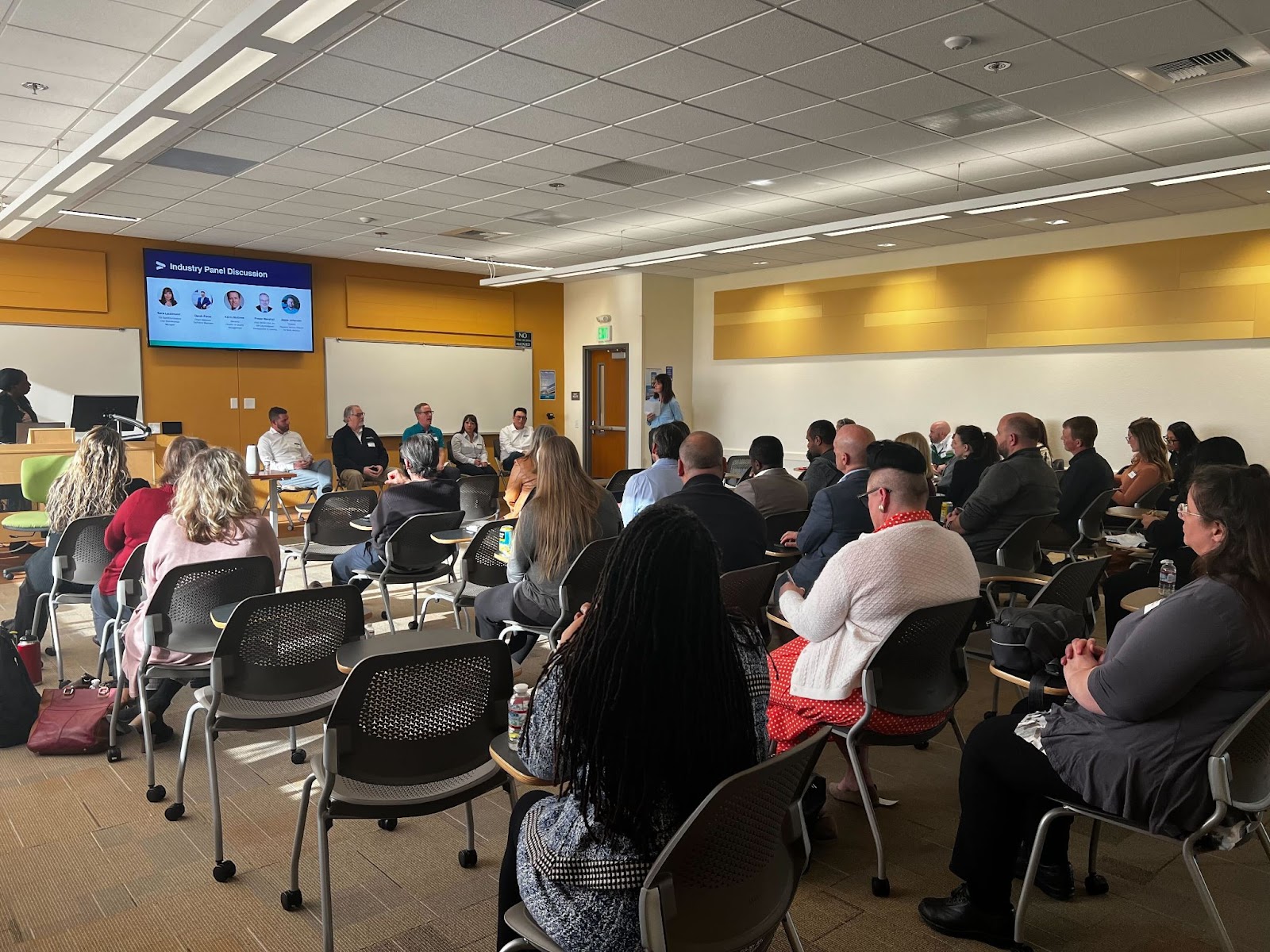
The Advanced Manufacturing Advisory was held on February 9th with an employer panel that included Siemens, TSI Semiconductors, DMG Mori USA, Origin Materials, and Tomra. The event showcased the breadth of career pathways available in the manufacturing sector and the higher-than-average earnings potential. The Sacramento region’s manufacturing jobs are projected to continue to grow, with many positions not requiring a Bachelor’s Degree. Additionally, the advisory showcased initiatives designed to increase equity and inclusion in the manufacturing workforce with a highlight on the Industry and Inclusion Cohort Program, in which Sierra College is participating.
Mental and Behavioral Health
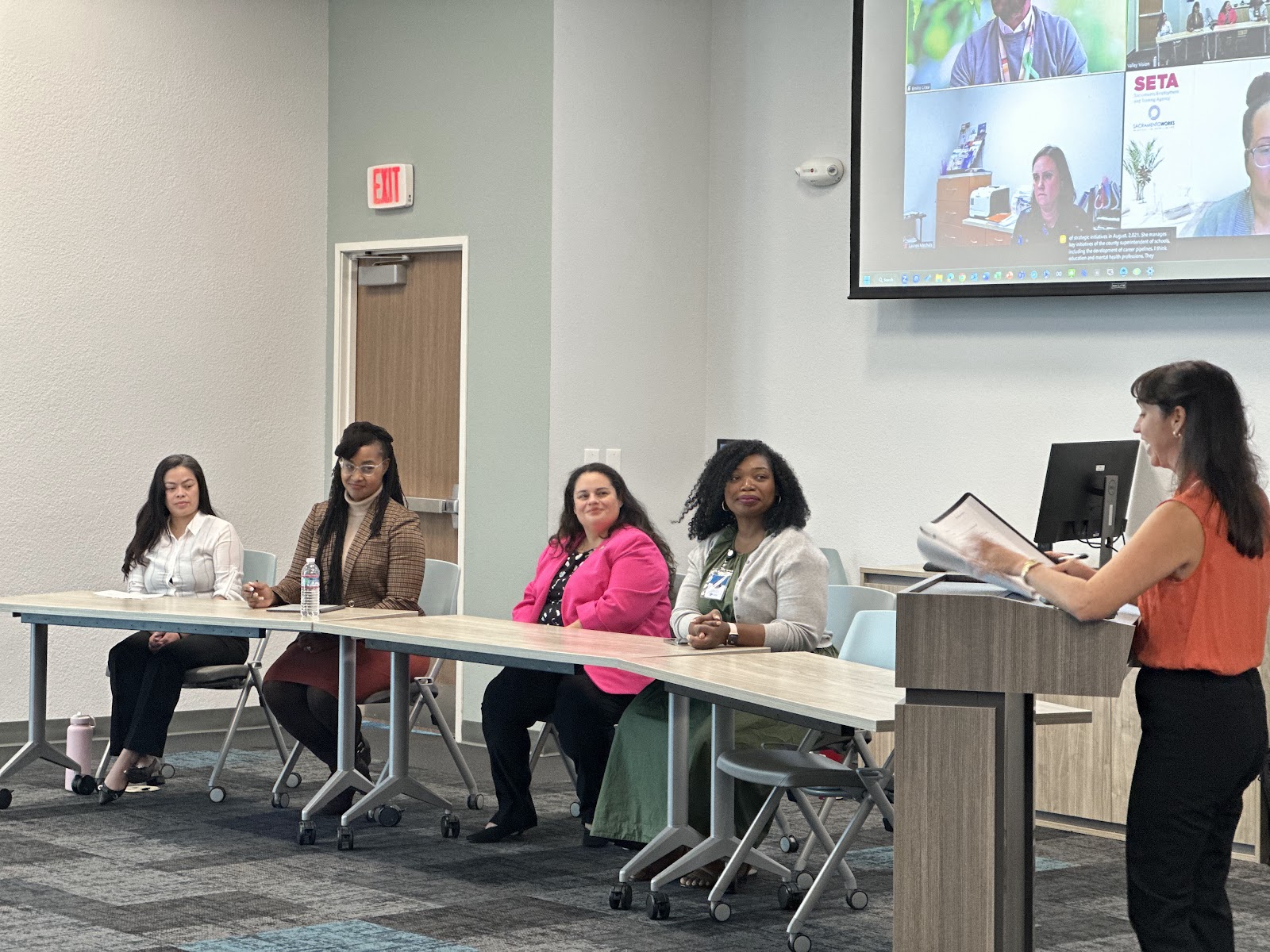
The Mental and Behavioral Health Advisory on September 21st featured two keynote addresses, one from California’s Department of Health Care Access and Information, providing insights into newly available state funding. The second address was from WellSpace Health on the organization’s extensive work in the Sacramento region and the need to bolster and diversify the mental and behavioral health workforce. Employers from Yolo County Children’s Alliance, La Familia Counseling Center, Sacramento County Office of Education, and Kaiser described the local labor demand and significant hiring opportunities. Job postings in the Greater Sacramento subregion have increased by 22% in the 12-month period spanning September 2022 to August 2023.
Information and Communication Technologies
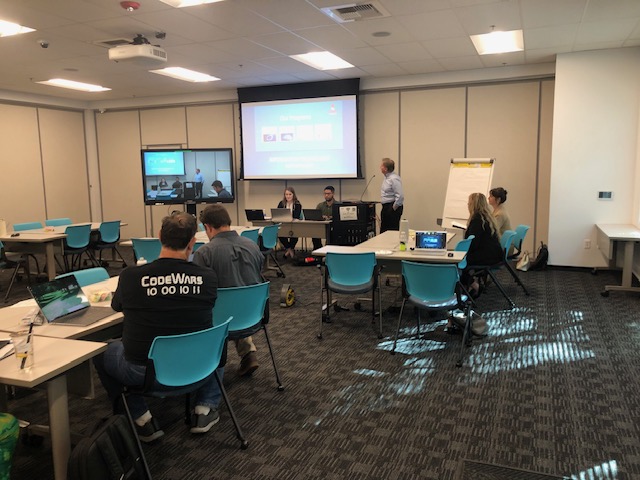
The Information and Communication Technologies advisory on October 12th emphasized the importance of stackable credentials, promoting collaborative efforts and post-event networking. Notable panelists included representatives from Placer County, Microsoft, the City of Roseville, and Swinerton. These employers engaged in insightful discussions about the regional job market and effective recruitment strategies. The Greater Sacramento region’s Information and Communication Technologies workforce anticipates a 6% job growth over the next five years, translating to 2,741 annual job openings from 2022 to 2027. This thriving sector boasts a median annual wage of $102,497.
Water Careers

During the Water Careers Advisory on October 27th, employers discussed upcoming career opportunities in the Greater Sacramento region due to the retiring workforce. The Office of Water Programs at Sacramento State and Valley Water were the keynote speakers who emphasized the need to diversify the talent pool and develop additional skills. Employer panelists included the California Department of Water Resources, the City of Sacramento Water Department, the State Water Resources Control Board, and Stantec. The demand for water-related jobs is projected to increase, especially for Electrical and Instrumentation and Maintenance/Repair Workers. The trajectory indicates a substantial 12% growth in water careers from 2022 to 2027.
Impact
Valley Vision regularly conducts post-event surveys to gather participant feedback and gauge the advisories’ impact. The results reflect an overall positive impression of the advisories with 100% indicating satisfaction with the information and materials provided.
“At the Valley Vision events, I developed relationships with organizations that have led to collaboration on events, volunteers, sponsorships, and referrals.”
Anonymous Attendee
“I like knowing what the future hiring trends are, but the community college programs are of most interest to me as a next step for my students to give them some direction after leaving high school.”
Anonymous Attendee
These testimonies underscore the importance of collaboration through mechanisms like this, providing valuable information and connections for future planning and continuous improvement of educational and workforce pathways.
Looking Ahead

Looking ahead, Valley Vision remains committed to creating opportunities for information sharing, collaboration, and innovation. Thank you to the employers, educators, and partners who contributed to these convenings. We invite all partners to join in building a resilient, inclusive workforce that reflects the collective strength and diversity of our shared region by attending upcoming advisories that can be found on our events page here. Your participation is vital as we strive to meet the region’s evolving workforce needs.
What Matters Most in 2024

Taking action together on the issues that most impact our region’s quality of life is critical to enabling the well-being of all. In 2024 we will face key decision points and need to address critical social, economic, and environmental challenges. The following recommendations were identified as part of our recent Livability Poll as the issues that matter most, while highlighting promising practices for our region.
Develop a collaborative and healthy civic culture to increase potential for transformation: In order to change systems and achieve different solutions, we must do things differently. This means that we must build trust, support aligned actions, stay open to new learnings, and advance connected, collaborative relationships. The Livability Summit hosted by Valley Vision is one example of civic space that is designed to catalyze collaborative solutions.
Accelerate housing development, especially infill and transit oriented: Addressing housing undersupply, advocating for efficient infrastructure investments, supporting innovative and adaptive practices, accepting new housing projects, and supporting initiatives like Green Means Go will help long term goals around housing affordability and accessibility. Immediate term initiatives that support pathways to homeownership, reduce displacement, and create responsive housing for those who are unhoused will support communities where they need it now.
Address persistent gaps in the social safety net: Accessible services for mental health, medical healthcare, food security, digital accessibility, and other basic needs are critical. Effective collaboration across nonprofits and jurisdictions is needed to invest adequate resources and reach the communities who need it most. Promising practices like guaranteed income programs as implemented by United Way California Capital Region and Yolo County offer potential solutions to help families close affordability gaps. Additionally, conducting outreach and education to expand participation in programs like CalFresh and affordable internet programs also bring millions of dollars into impacted communities.
Address workforce challenges and other challenges in the care economy to increase regional capacity: Addressing senior care and childcare as a workforce challenge will involve a multifaceted approach to the way we implement solutions from multiple stakeholders. To increase childcare capacity, some possible strategies include: advance multiple-subject teaching credentials, expand workforce pathway support for entry-level teachers, expand work-based learning and credit for prior learning, provide specific support for underrepresented groups, and accelerate awards production for our region to remedy existing staffing shortages and meet demand. See the Shortages in Early Childhood Education study for more information.
Build a pipeline of good jobs that support a clean economy: Our region is engaging in an intensive effort to identify our potential for high quality job growth and working with communities across the region to build out a pipeline of supportive infrastructure and initiatives to support an inclusive and thriving economy through the Capital Region California Jobs First (CERF) program. Fully integrate climate resilience with inclusive economic development actions: We are facing a systemwide transition to a lower carbon economy. This will require an all hands-on-deck effort to envision and implement an inclusive and equitable low carbon future. The level of systems integration between economy, environment, and community is significantly different and more complex than conditions of the past. We need to see all jobs as climate jobs and all economic growth as climate resilience to create a thriving economy for the future.
Achieving a more livable region requires addressing disparities in access to essential needs, fostering opportunity across all demographics, and nurturing a sense of belonging within the community. It is through collective effort and a commitment to these principles that the Sacramento Region can work towards a brighter, more inclusive, and truly livable future for all its residents. We look forward to working with you this year on collaborative solutions to the things that matter most for the people and places in our region.
To keep up with Valley Vision’s work to advance livability in the Sacramento region, subscribe to our Vantage Point email newsletter.
—————
Evan Schmidt is CEO of Valley Vision.
Navigating the Waves: Insights from the Water Careers Event

The Energy, Construction, and Utilities (ECU) Advisory event offered a view of water-related career opportunities within the region, delivering valuable perspectives for program development in the field. The event highlighted the opportunities and the challenges of an imminent skill shortage.
Ramzi Mahmood, Director of the Office of Water Programs (OWP) at Sacramento State, and Patrice McElroy, Deputy Administrative Officer from Valley Water, were keynote speakers and shared impactful presentations on the landscape of workforce development in the region, the Labor Market Data presented by the Center of Excellence showed signs of growth, with estimates of an increase from 7,150 positions in 2022 to an anticipated 8,003 by 2027, marking a notable 12% expansion in the region.
However, amidst this positive outlook of job growth, tackling the worker shortage was a predominant theme. Mahmood spoke on the forthcoming wave of retirements over the next 5-10 years, compounded by a nationwide hiring squeeze, presenting challenges in filling critical positions. The keynote stressed the inadequacy of relying solely on chance to attract students to water-related careers. Instead, Mahmood advocated for a comprehensive strategy encompassing early education, specialized training programs, hands-on experiences, recognized certifications, and pathways to successful career attainment. The employer panel echoed similar sentiments. Specifically, Samantha Blackwood from the Department of Water Resources (DWR) explained that one in ten DWR employees are currently eligible for retirement, and in five years the numbers will jump to 20 percent, or one in five, and in 10 years roughly one of three DWR employees are eligible for retirement.
In response to this anticipated shortage, panelists advocated for strategic investments in internships and grant programs. Additionally, training institutions and employer agencies can collaborate to provide practical experience and financial support to prospective employment candidates, laying the groundwork for a skilled future workforce.
As the dynamics of the regional water job market evolve, a focus on planning, education, and investment becomes imperative. Insights gathered from events like this advisory serve as an opportunity to share strategies and networks to navigate this shifting industry landscape. Additional information including the full event recording and presentation materials can be found here.
Air Quality and “Exceptional Events” – A Primer

For more than 35 years, the Cleaner Air Partnership (CAP) has been the Sacramento region’s most prominent voice focused on advancing partnerships between local government, industry, and environmental groups to improve air quality. Key to our mission is the identification of win-win-win opportunities for collaboration between these sectors.
Some of our coalition “wins” have included successful advocacy for legislation in 1997 to require the Bay Area to implement NOx reduction in their smog check program (which was disproportionately impacting our region), establishing a permanent CARB Board seat for a Sacramento region representative in 2012, and the designation of South Sacramento-Florin as a first-round AB 617 environmental justice community in 2018.
Public education is particularly important as we think about issues that impact public health – simplifying complex air quality topics is a core Cleaner Air Partnership activity as part of our quarterly Luncheons, Technical Advisory Committee meetings, and related efforts.
Last month, our region’s largest public radio station, Capital Public Radio, published several pieces related to the “exceptional events rule” utilized by air quality regulators across the nation:
- Insight: Loophole Lets Air Regulators Wipe Pollution From Records
- What is the exceptional events rule? The loophole letting US regulators wipe air pollution from the record
- Revealed: how a little-known pollution rule keeps the air dirty for millions of Americans
The best definition of “exceptional events” comes from the San Joaquin Valley Air Pollution Control District (SJVAPCD): “Exceptional events are unusual or naturally occurring events that can affect air quality but are not reasonably controllable using techniques that tribal, state or local air agencies may implement in order to attain and maintain the National Ambient Air Quality Standards (NAAQS). Exceptional events may include wildfires, high wind dust events, fireworks, prescribed fires, stratospheric ozone intrusions, and volcanic and seismic activities.”
All of the news articles question the value of the exceptional events rule to public health, purporting that the rule “wipes air pollution from the record.” Put simply, this is inaccurate information that mixes up different air agency activities, resulting in a false characterization of what the rule actually does. These processes are described below:
- Activity #1: Air Quality Management: At its core, air quality management in the United States means implementation of the Clean Air Act, “the comprehensive federal law that regulates air emissions from stationary and mobile sources.” The Act sets policy interventions such as emission standards for anticipated and controllable sources of pollution. By definition, an “exceptional” event is unanticipated and not amenable to policy controls.
- Activity #2: Federal Air Quality Monitoring: The purpose of air agencies conducting Federal air quality monitoring is to track the progress of regulatory actions and pollution reduction measures taken by federal, state, or local authorities for emission sources under their control (such as permitted facilities). However, “exceptional events” are outside the control of air agencies. For example, when there’s a wildfire in Paradise that creates toxic air pollution in Sacramento, there isn’t a policy mechanism at the local government level to do anything about it beyond exposure reduction. To say that pollution from wildfires is being “erased from regulatory consideration” isn’t accurate, considering the jurisdictional ownership over the issue.
- Activity #3: Data Management: All Federal air quality monitoring data, whether it is collected during an exceptional event or not, is always available to the public and is never deleted. It is critical that the air monitoring results, which are collected and reported by air agencies on an hourly basis, are made available in a transparent and easily accessible manner.
- Activity #4: Public Health Communications: Air agencies are also tasked with communicating air quality conditions to the public, via tools like our local Spare The Air. These important tools help communities decide how and when to protect themselves from exposure to any air pollution throughout their day. Contrary to the reporting cited above, air quality data from exceptional events *is* indeed included in all public health-related communications from air agencies, including Spare The Air, and public health agency records.
As you can see, it’s important to understand the role of federal, state, and local air agencies under the Clean Air Act. Data is not gathered for one single purpose, as agencies have multiple obligations to serve the public. While the exceptional events rule is rather technical, it is important for media outlets to understand the nuances of the issue before broadcasting misleading information to the public.
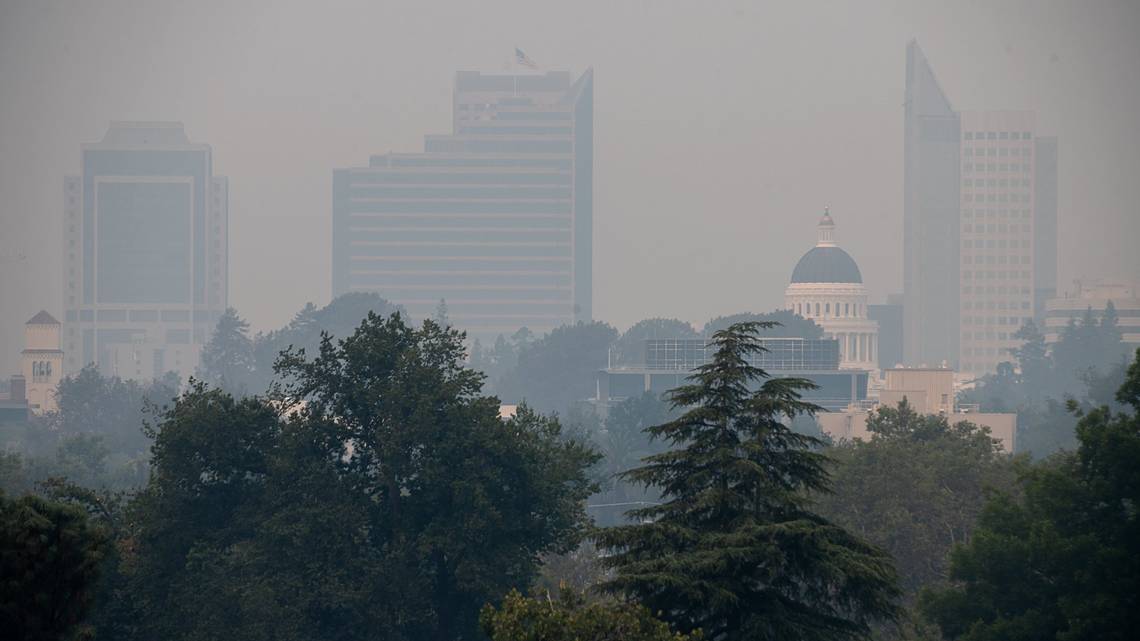
“In partnership with regulatory agencies, environmental health organizations and the public, we have been steadily improving the region’s air quality over the past five decades,” said Jennifer Finton, CEO of Breathe California Sacramento Region. “Exceptional events are merely a designation to account for unforeseen concentrated increases in air pollutants. During these exceptional events and throughout the year, the public can take steps to protect their lung health by following the guidance provided by local health departments and air districts. Individuals can play a critical role in minimizing climate change’s effects on these exceptional events by using active and clean transportation modes, among other behavior changes.”
In a world without the exceptional events rule, our region would have a lot of problems: (1) legally-binding air quality attainment (whether we meet specific air quality goals set by the Clean Air Act) by air agencies would not be possible, (2) As a consequence, we would lose out on funding for transportation and land use projects, and (3) air agencies would not be able to actually do anything to address the sources of the exceptional events, because they lack the regulatory authority.
”The exceptional events rule is a critical tool in understanding the progress the region is making in continuing to reduce emissions from our local sources,” said Erik White, Director of the Placer County Air Pollution Control District. “Without it, we would not be able to craft effective local strategies to continue reducing emissions, especially for our most vulnerable citizens.”
The Cleaner Air Partnership is committed to simplifying and successfully communicating these complex topics to our communities. As with the “exceptional events rule,” we will continue to ensure that accurate information about air quality is disseminated as a resource for the public. To keep up with the Cleaner Air Partnership, sign up for our “Cleaner Air News” email newsletter here (select ‘Clean Economy’).
Fixing Our Roofs and Tending Our Gardens: The Livability Summit
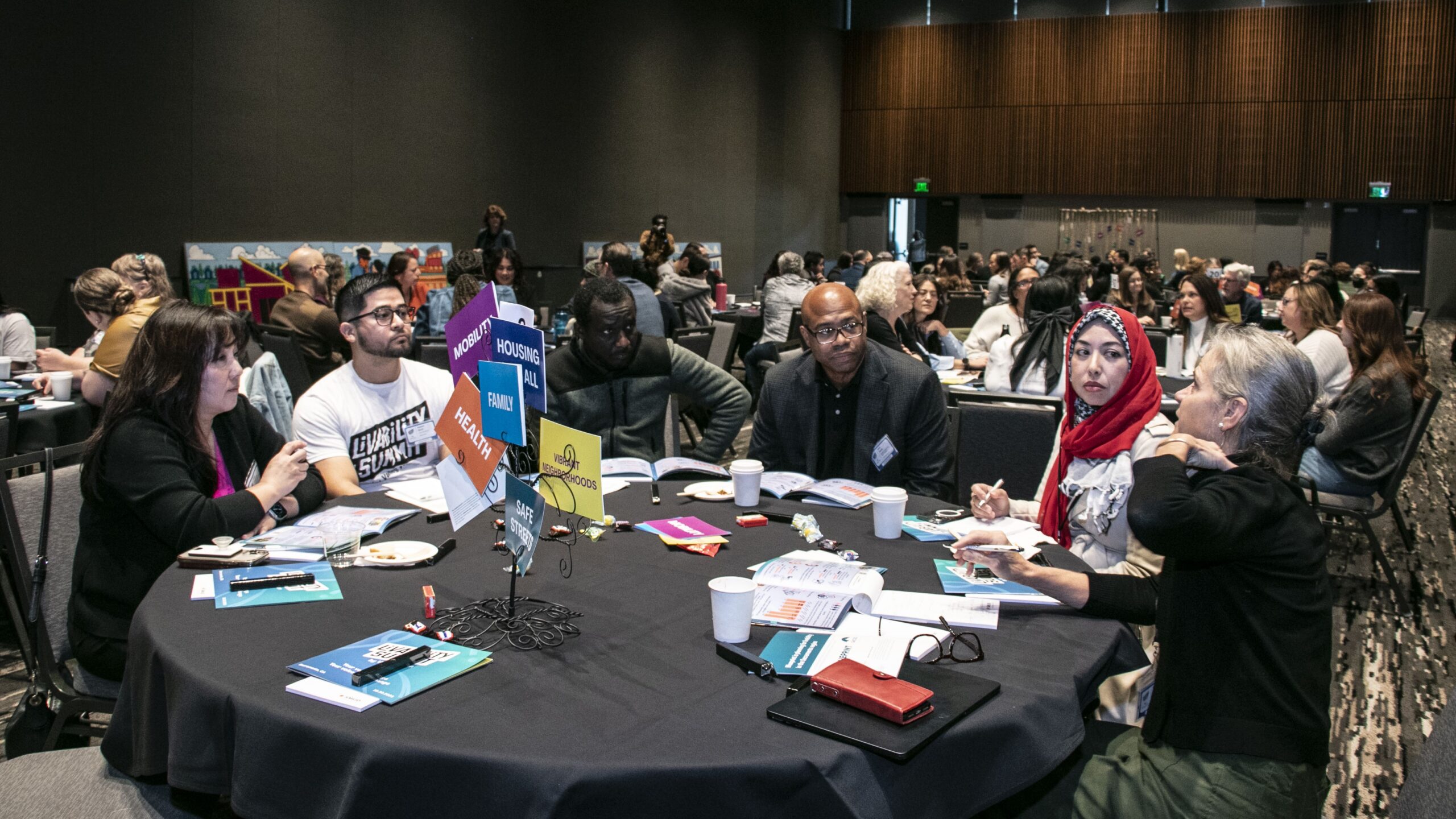
On October 30th, our region came together for Valley Vision’s second Livability Summit. The event provided a wellness check on livability for our region and explored how we can work together to make our communities more livable for all. The purpose of the Livability Summit is to provide data, thought leadership, and collaborative opportunities to inspire and drive change. In a time where divisions and entrenched social problems plague our civic life and harm our communities, we believe that having civic space that brings diverse people together, enables candid conversations, and encourages new ways of thinking about old problems is foundational to community building and contributes to livability for people in our region.
Some of what we learned was through data, including The Livability Poll – a public opinion poll created by Valley Vision and our partners at the Institute for Social Research at Sacramento State. Findings showed that our natural spaces, parks, trails, and open space remain our most valued regional quality of life asset, that housing prices are unaffordable especially for renters, that unaffordable and inaccessible childcare is a significant barrier for parents, and that inequities result in more challenges for communities of color and lower income individuals when it comes to access, affordability, and levels of satisfaction across a number of factors.
And then some of what we learned was from the information and accounts provided by guest speakers and event participants. In our first segment, we invited participants up to the stage in a “Lead from Any Seat” reverse panel exercise – where our elected officials and other civic leaders were asked to stay seated and listen while audience members who might otherwise not have an opportunity to share were asked to join the stage to share brief remarks. One of my favorite quotes was from Kevin Daniel who reminded us that we “should not be tending to our garden while our roof is leaking” and that we must take action where it is needed most – ensuring housing, basic needs, and opportunities for those who need it most. In a video that captured the beauty and challenges of the region, “Shared Prosperity” showed us both where the region’s gardens are flourishing and where our roof is leaking – check it out here.

In the segments that followed, we looked at different aspects of what it takes to build an inclusive economy that improves livability for all. These segments included a SACOG-hosted session on the importance of commercial corridors, our keynote speaker, Judith Taylor, who spoke about her experiences across the nation in building community-centered economic initiatives and how to create “transformation without displacement,” a deep dive into Valley Vision’s inclusive economy initiative related to California Jobs First (CERF), and a look at how neighborhood leaders in Del Paso Heights are working with Golden One Credit Union to create long-term transformation that lifts up the community in Del Paso.
Finally, some of what we learned was through talking with each other. In between stage segments, a facilitator sat at each table to introduce discussion questions, document responses, and facilitate discussion among audience members. Additionally, audience members were deliberately mixed up to create diverse tables where attendees were likely to hear a different point of view or meet someone they didn’t know. These sessions brought about robust discussion, created new connections for participants, and helped provide catalytic collaboration that will inform Valley Vision’s work over the next year and fuel actions for others as we work collectively to solve the challenges for our communities.
For Valley Vision, we know that a one-day event like the Livability Summit won’t solve all the problems. But, we think of it as our love note to the region – bringing the best of what we can do (collaboration, research, network building, system change action) to the people and the region we love. Thank you to those who supported the effort and those who attended – you will continue to hear from us about how we will enact the changes and advance ideas learned at the event.
To keep up with Valley Vision’s work to advance livability in the Sacramento region, subscribe to our Vantage Point email newsletter!
Evan Schmidt is CEO of Valley Vision.
Promoting Public Sector Pathways

Valley Vision partnered with Los Rios Community College District and the Institute of Local Government’s Innovative Pathways to Public Sector initiative to host a regional Public Sector Workforce Forum at Sacramento State’s University’s downtown campus.
The Innovative Pathways to Public Sector (IPPS) initiative seeks to raise awareness of career opportunities and tackle workforce inequities to ensure the public sector workforce reflects the diversity of the community it serves. The forum was specifically designed to tackle the pressing challenge of expanding the public sector workforce by aligning, expanding, and diversifying the pipeline to public sector careers.
The Sacramento region has a significant concentration of public sector jobs, accounting for 24% of the jobs in the area and 14.5% of all jobs in California. The event shed light on the critical issues surrounding the labor market, including the shortage of skilled workers, the decrease in female workforce participation, and the difficulty of public sector compensation keeping up with the impact of inflation and housing costs. The current job market is increasingly favorable to job seekers with employees having higher expectations on competitive wages, increased benefits options, flexible work arrangements, work-life balance, and a workplace culture that celebrates diversity, equity, and inclusion. The public sector is not always able to offer the compensation and flexibility that has become increasingly in demand, especially for Millennial and Gen Z populations.
The event began with Erica Manuel, CEO and Executive Director at the Institute for Local Government, sharing Labor market information detailing challenges in meeting talent demands in the public sector within the Sacramento region. The data showed that nearly 70% of these entities are facing challenges such as limited hiring pools, high turnover rates, and the need to train the next generation of leaders. One of the major concerns from these challenges is a shortage of workers with the abilities and knowledge to perform their jobs effectively, a result that has been exacerbated by the retirement of Baby Boomers and ever-increasing turnover rates. The impact is agencies are facing significant skill gaps within the workforce, requiring organizations to adapt and find innovative solutions to address these skill shortages.
CalHR’s Statewide Career Strategy Manager, Lanya Trejo, shared efforts currently underway to revise previous restrictions to employment like having a justice-involved record, education qualifications, and complicated steps to apply for a state job. Trejo stated that a comprehensive review of all job positions in the state of California has been prompted by directives from the Governor’s office, aiming to identify and eliminate obstacles to employment. This initiative is driven by the need to address a 20% vacancy rate and effectively compete with the private sector for talent. Currently, 75% of state jobs mandate a Bachelor’s degree, while only 45% of applicants possess one, resulting in what experts refer to as the “paper ceiling.” To tackle this challenge, approximately 40 state departments are actively participating in the effort to reduce the barriers to employment. Progress is already underway with the elimination of employment check boxes indicating justice-involved backgrounds and unnecessary education requirements from 169 job classifications. In addition, CalHR is in the process of establishing a Community of Practice to foster collaboration and knowledge sharing to further advance barrier removal.
Local efforts to prepare students for these jobs was presented by Josef Preciado, Director at American River College, who shared Los Rios Community College’s efforts in a Strengthening Community Colleges Training Grant Program designed to align educational outcomes with the public workforce sector skill demand. As one of only 11 grantees nationwide, Los Rios stands out for its unique focus on public-sector job partnerships. By extending the initiative across all four colleges within the Los Rios Community College District, the program’s impact will benefit the entire region. Valley Vision has supported these efforts by surveying public sector employers and facilitating regional advisory board meetings focused specifically on public sector pathways.
The forum also featured details on the capital region’s California Jobs First (previously CERF) efforts designed to create sustainable, inclusive economic development. SMUD shared their initiative on building community partnerships and regional skill alignment through a structured four step approach: awareness, entry-level skill building, advanced learning, and employment. ILG explained the Earn and Learn apprenticeships programs designed to create access to public sector jobs in the region, and discussed the creative solutions local governments are open to exploring to bridge the growing skills gap.
The Public Sector Workforce Forum in Sacramento was designed to highlight the significant opportunities available in public sector careers and the challenge of filling these positions. Collaboration across partners was a consistent theme to meet the moment and ensure the next generation of public sector employees is more representative of our population at large. IPPS and collaborative efforts demonstrate promise in how this region can work together to grow a more diverse, representative talent pool for these high-quality jobs.
For more information, or to get involved, contact DiAngelo at diangelo.andrews@valleyvision.org.